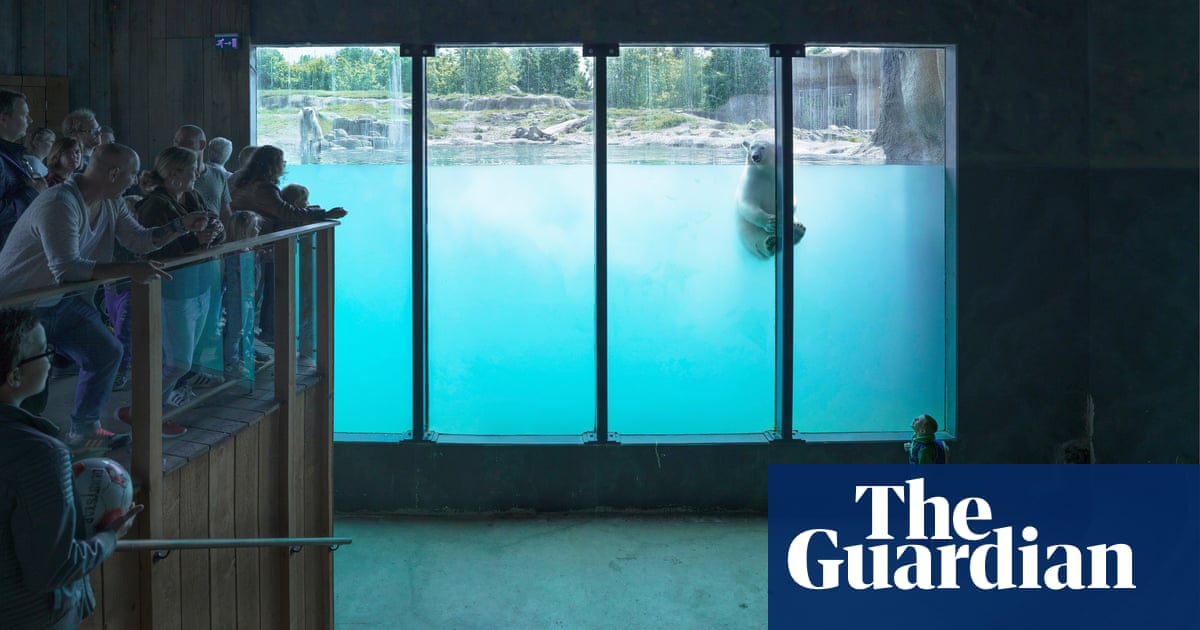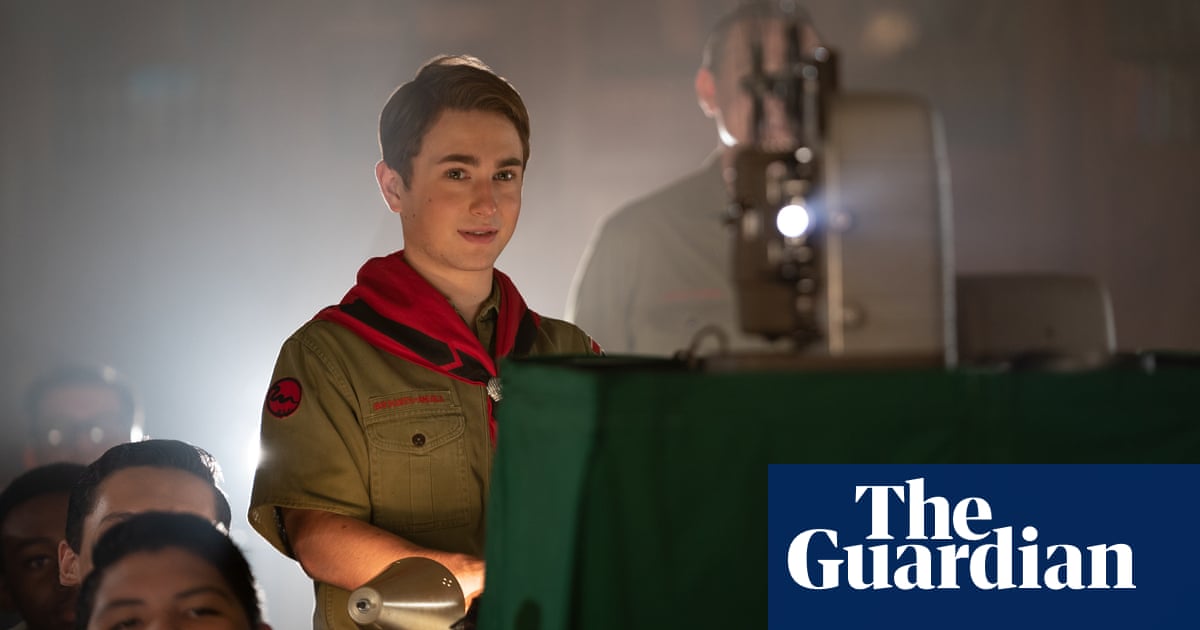
My work focuses on the relationships between humans and non-humans in contemporary society – not just animals, but plants and other species, from eels to tuna. In terms of animals, we keep them as pets, we eat them, we wear clothes made from them, we use them to make vaccines in laboratories – and we put them on display for entertainment.
This was taken in Blijdorp zoo in Rotterdam. There are two polar bears, one to the right and one to the left. They are siblings, named Sizzel and Todz, who used to live with their mother at the zoo. The space is arranged like a theatre. It’s rare for polar bear enclosures to have a dedicated viewing area like this. The window has a history: one bear, Vicks, the older brother of Sizzel and Todz, broke it by hitting it with a rock.
This wasn’t the first time I tried to take this picture. I’d been to the location before, in 2014, but wasn’t satisfied with the result. Two years later, I tried again. I stood in this theatre and waited for half a day. Usually, the bears are resting or playing somewhere else in the enclosure. But here there was a moment of theatre, because it was a feeding session, which is a show in itself. The people are watching the bear and the bear is looking back. The little boy in the bottom right balances the image. The photo, and the White Bear series that it’s part of, asks: “What brings us here? What brings us to the point where we, as a species, are viewing wildlife behind glass windows? What is the purpose of these animals being in captivity?”
Polar bears have become a powerful symbol of the climate crisis. When looking at this photo, viewers often think about that – and contemplate the role of zoos and aquariums as “last resorts” for a species’ survival. It’s not for me to say if this climate crisis connection adds poignancy to the image. I don’t wish to exploit that symbolism. My humble project aims primarily to explore the potential problems of zoos, such as poorly designed enclosures, lack of space and boredom among the animals. Zoos can play a crucial role in conservation, but no zoo is perfect.
I don’t think Sizzel and Todz live in this enclosure any more. They were pretty young when I took this, maybe one or two years old. Young polar bears in zoos usually display playful behaviour. But the older they grow, the more monotonous their life seems to be. Beyond the human-animal relationships, the general point I’m trying to make is that it’s very difficult for me to remind myself that I am a human being. We take our “specieshood” for granted. We live every day as humans, but we don’t tend to think about it. We don’t wake up and say: “This is a nice day and I am a human.” But it’s something that shouldn’t be taken for granted, because we have so much power to influence the other species in the world.
I wouldn’t want to impose my feelings on an animal in an enclosure. If I take a so-called sad image of such an animal, it’s just one picture. Another photographer could take a happy image of the same animal. Here, I just wanted to show a moment of awkwardness. My work is not about reaching a super-wide audience or influencing society. If the project resonates with one person, that’s good enough for me.
Sheng-Wen Lo’s work is part of Civilization: The Way We Live Now at the Saatchi Gallery, London, from 2 June to 17 September. To see more of Sheng-Wen Lo’s work, visit shengwenlo.com and @sheng_wen_lo on Instagram.
Sheng-Wen Lo’s CV
Born: Kaohsiung, Taiwan, 1987.
Trained: MA in photography at AKV St Joost and MSc in computer science at National Taiwan University.
Influences: “Stephen Shore, Bernd and Hilla Becher, Donna Haraway, Jacques Rancière.”
High point: “It’s the little things, like when people contact me about how a project has influenced them and how they made different life decisions. I remember a girl telling me my projects encouraged her to study veterinary sciences in university. That’s really powerful for me.”
Low point: “Two years ago, my father passed away. Since I live in the Netherlands, I couldn’t really go back to him during the pandemic.”
Top tip: “Find your own frontline. We don’t have to follow a known photographer’s footsteps. The most important thing is to be true to yourself and develop your own special discourse in your work.”












